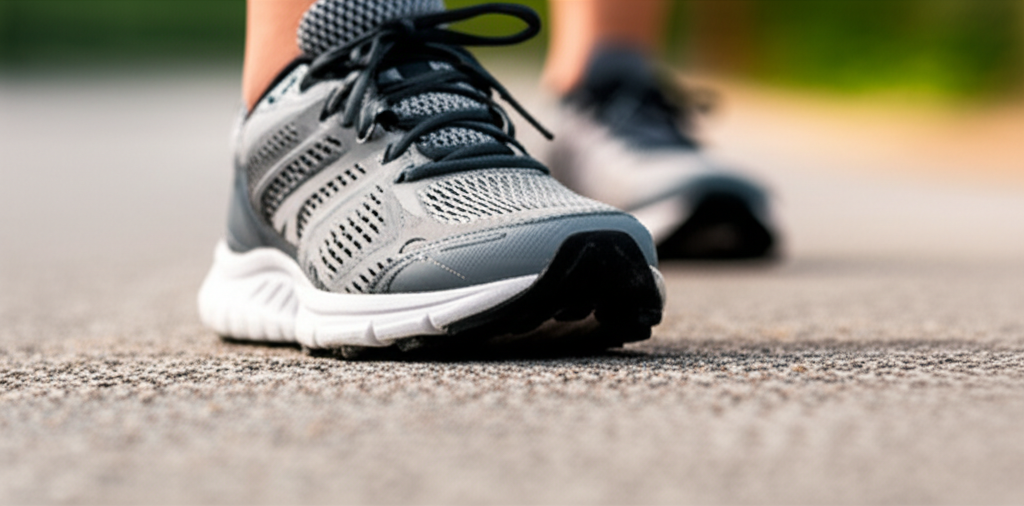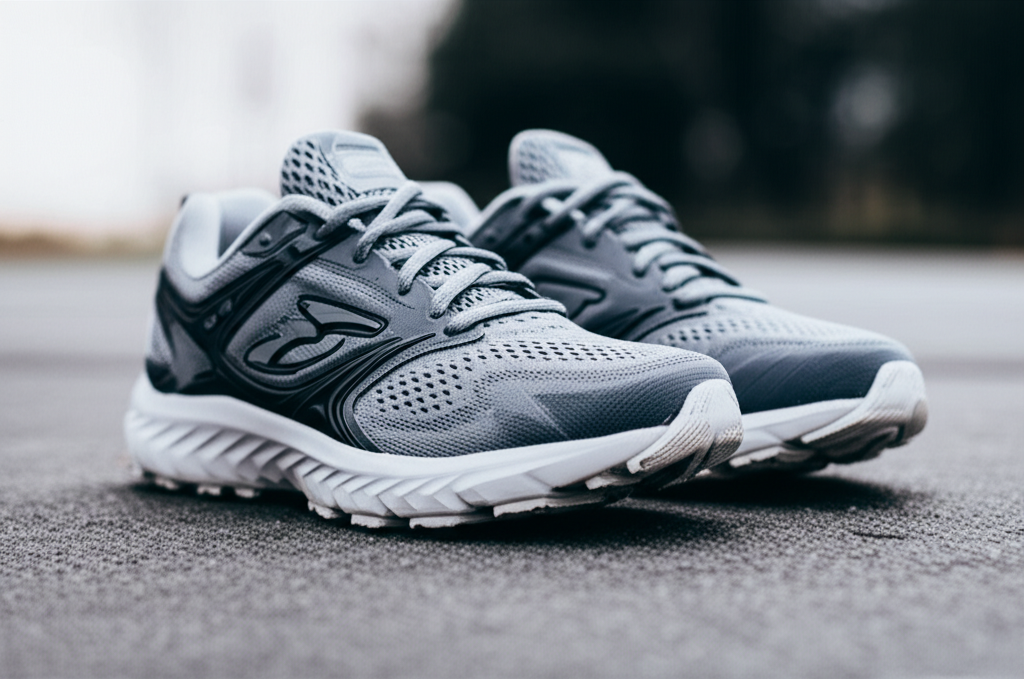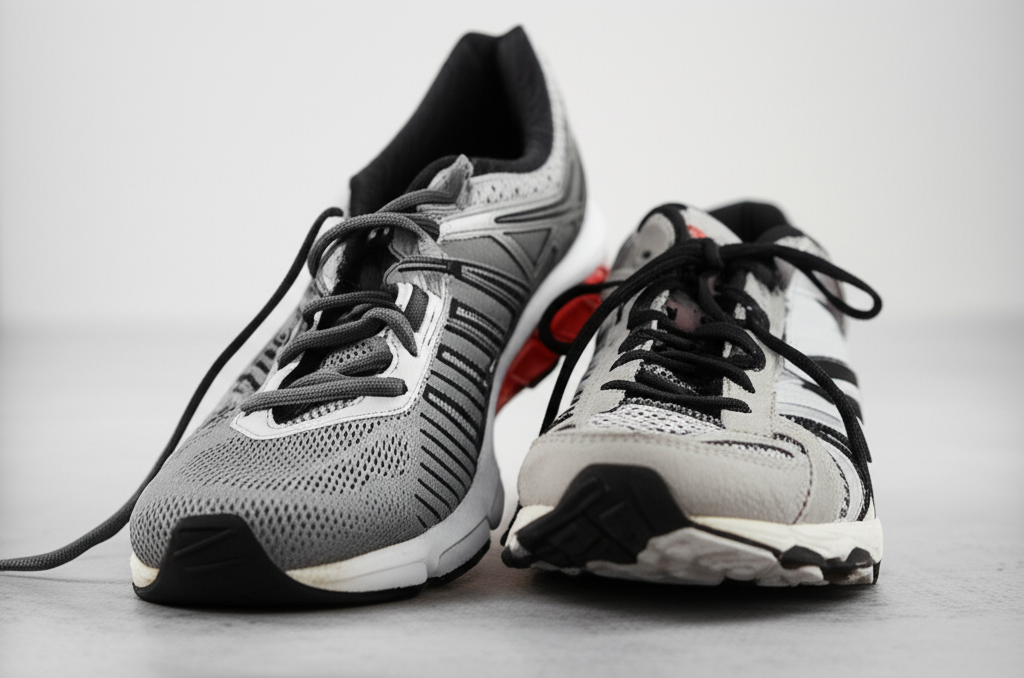While walking shoes offer comfort, they are generally not ideal for running due to fundamental design differences that can impact performance and increase injury risk. For dedicated runners, specialized running shoes provide essential support, cushioning, and responsiveness that walking shoes lack.
Key Takeaways
- Running shoes offer superior shock absorption.
- Walking shoes lack the necessary flexibility for running.
- Different shoes cater to distinct biomechanics.
- Using walking shoes for running may increase injury risk.
- Running shoes enhance performance and comfort.
- Consider your activity when choosing footwear.
Are Walking Shoes Good for Running? The Shocking Truth
You’ve probably asked yourself, “Are walking shoes good for running?” It’s a common question, especially when you’re starting a new fitness routine or looking to save a little money. You might think a comfortable shoe is a comfortable shoe, right? While both walking and running involve your feet hitting the ground, the forces and motions are surprisingly different. This is why using the wrong shoes can be a bit of a surprise, and not in a good way. We’re here to clear up the confusion and guide you through the essential differences so you can make the best choice for your feet and your workouts.
Let’s dive into why your favorite comfy walkers might not be the best pick for your next jog.
Understanding the Fundamental Differences: Walking vs. Running

To truly understand if walking shoes are good for running, we need to appreciate the distinct demands each activity places on our bodies and, consequently, on our footwear. Think of it like using a screwdriver to hammer a nail – it might technically work in a pinch, but it’s not designed for the job and could lead to damage.
The Biomechanics of Walking
Walking is a relatively low-impact activity. Your foot rolls through a complete cycle, from heel strike to toe-off, with one foot always in contact with the ground. The forces involved are generally about 1.5 times your body weight. Because of this smoother, more controlled motion, walking shoes are designed for:
- Comfort and Stability: They prioritize cushioning for everyday wear and a stable base to support your stride.
- Flexibility: They often have a more flexible sole, particularly in the forefoot, to allow for a natural walking gait.
- Durability: They are built to withstand daily wear and tear.
- Flatness: Many walking shoes have a relatively flat sole, offering a solid platform.
The Biomechanics of Running
Running, on the other hand, is a high-impact activity. At certain points during a run, your feet can experience forces of up to 2.5 to 3 times your body weight. There’s a moment when both feet are in the air, and the landing is much more forceful. Running shoes are engineered to handle these stresses by offering:
- Advanced Cushioning: They use specialized foams and technologies to absorb shock and reduce impact on your joints, especially the knees and hips.
- Responsiveness: Running shoes are designed to return energy, helping to propel you forward with each stride.
- Support and Motion Control: Depending on your foot type and gait, running shoes can offer specific support to prevent overpronation (where your foot rolls inward excessively) or supination (where it rolls outward).
- Flexibility in the Right Places: While they need to be flexible, the flexibility is often concentrated in the forefoot to facilitate a powerful toe-off.
- Heel-to-Toe Drop: Many running shoes have a slight elevation in the heel compared to the forefoot, which can influence stride mechanics and reduce strain on the Achilles tendon.
The differences in these forces and movements are crucial when asking, “Are walking shoes good for running?”
Why Walking Shoes Fall Short for Running
Now that we understand the basic differences, let’s get specific about why your trusty walking shoes might not be the best choice for hitting the pavement for a run. The “shocking truth” isn’t about a hidden danger, but rather a clear understanding of biomechanical needs.
1. Insufficient Shock Absorption
This is arguably the biggest reason. Running generates significantly more impact than walking. Walking shoes typically have basic cushioning designed for comfort during a stroll. When you run in them, this cushioning quickly becomes inadequate. You’ll feel the jarring impact more intensely, which can lead to:
- Shin splints: Pain along the shinbone, often caused by overuse and inadequate shock absorption.
- Knee pain: The knees absorb a lot of impact, and without proper cushioning, they are prone to injury.
- Foot pain: The bones, ligaments, and tendons in your feet can become sore and inflamed.
- Joint stress: Over time, this repeated impact can put undue stress on your ankles, knees, hips, and even your lower back.
Running shoes, conversely, are built with advanced cushioning systems (like EVA foam, gel inserts, or air pockets) specifically engineered to dissipate these forces effectively. Brands like Hoka, Brooks, and Asics are renowned for their superior cushioning technologies.
2. Lack of Flexibility and Responsiveness
Running requires a more dynamic foot movement. Your foot needs to flex and extend efficiently to propel you forward. Walking shoes are often designed to be more rigid or uniformly flexible. This can:
- Hinder your stride: A less responsive shoe can make your stride feel heavy and sluggish.
- Cause strain: Forcing a shoe that isn’t designed for it to bend in ways it shouldn’t during a run can lead to muscle fatigue and strain in your feet and calves.
- Reduce energy return: You’ll expend more energy with each step because the shoe isn’t helping to give you a little spring back.
Running shoes have targeted flexibility, often in the forefoot, to allow for a powerful push-off. They also incorporate materials that provide energy return, making your run feel more efficient and less taxing.
3. Inadequate Support for Running Gait
The way your foot moves when running is different from walking. Your foot strikes the ground with more force, and the arch of your foot plays a critical role in absorbing and distributing that impact. Walking shoes offer general support, but they often lack the specific stability features needed to:
- Control overpronation: Many runners overpronate, meaning their foot rolls inward too much upon landing. This can lead to injuries like plantar fasciitis and IT band syndrome. Specialized running shoes have stability features (like medial posts or guide rails) to counteract this.
- Support for different foot strikes: Whether you’re a heel striker or a midfoot striker, running shoes are designed to support those specific landing patterns.
- Maintain arch integrity: The arch needs to flex and support during the running gait. Walking shoes might not offer enough structured support for this demanding motion.
You can learn more about understanding your foot type and gait from resources like the Runner’s World guide to finding the right running shoes.
4. Durability Issues Under Stress
While walking shoes are built for durability in everyday use, the repetitive, high-impact stress of running can break them down much faster. The cushioning can compress permanently, and the structural integrity of the shoe can be compromised. This not only reduces their effectiveness but can also increase the risk of injury as the shoe fails to provide the support it once did.
When Might Walking Shoes Be “Okay” (with Caveats)?

It’s not entirely black and white. There are very specific, limited scenarios where walking shoes might be pressed into service for running, but these come with significant caveats. If you are:
- A complete beginner just starting out: If you’re taking your very first, very slow, very short walks that occasionally involve a tiny bit of jogging (think jogging for 30 seconds at a time), and you don’t have any existing foot or joint issues, your comfortable walking shoes might suffice for the initial few weeks.
- Injured and advised to stick to very low-impact activities: In some rehabilitation scenarios, a doctor or physical therapist might recommend a brisk walk that includes very light jogging intervals. If you already own comfortable walking shoes, they might be sufficient for this specific, guided activity.
However, even in these situations, the moment you start increasing your running distance, speed, or frequency, you will quickly outgrow the capabilities of walking shoes. The “shocking truth” is that these are temporary workarounds, not long-term solutions.
The Benefits of Dedicated Running Shoes
So, if walking shoes aren’t ideal, what makes running shoes so special? The investment in a pair of running shoes is an investment in your health, comfort, and performance. Here’s why dedicated running shoes are a game-changer:
1. Enhanced Injury Prevention
This is paramount. The advanced cushioning and support systems in running shoes are designed to mitigate the repetitive stress that can lead to common running injuries. By absorbing shock and stabilizing your foot, they help protect your joints, muscles, and bones.
2. Improved Comfort Over Distance
As you run longer, comfort becomes increasingly important. Running shoes are built with breathable materials and seamless interiors to reduce friction and blisters. Their superior cushioning means your feet will feel better, mile after mile, allowing you to focus on your run rather than discomfort.
3. Increased Performance and Efficiency
Running shoes are designed to work with your natural biomechanics to make running feel more efficient. The responsive materials and carefully engineered sole patterns help you get more energy return from each stride, potentially leading to faster times and less fatigue.
4. Tailored to Your Needs
The running shoe market is vast, with options for every type of runner. You can find shoes for:
- Neutral runners: Those with a balanced gait.
- Overpronators: Those whose feet roll inward excessively.
- Supinators: Those whose feet roll outward.
- Trail running: Shoes with enhanced grip and protection.
- Road running: Shoes optimized for pavement.
- Speedwork: Lighter shoes for faster efforts.
- Long-distance running: Shoes with maximum cushioning.
This specialization ensures you get a shoe that perfectly complements your running style and needs.
Choosing the Right Running Shoes: A Beginner’s Guide

Deciding to invest in running shoes is a smart move. But with so many options, how do you choose? Here’s a simple guide:
Step 1: Assess Your Needs
Before you even look at shoes, consider:
- Your Activity Level: How often will you run? What distances?
- Your Running Surface: Mostly roads, trails, or a treadmill?
- Your Foot Type: Do you have high arches, flat feet, or neutral arches? (A wet footprint test can give you clues: a full footprint means flat feet, a very thin line means high arches, and a shape with a distinct curve is neutral).
- Any Past Injuries: Have you had issues with shin splints, plantar fasciitis, or knee pain?
Step 2: Visit a Specialty Running Store
This is the best advice for beginners. Staff at these stores are knowledgeable and can:
- Analyze your gait: Many stores have treadmills where they can film you running and assess your foot strike and pronation.
- Measure your feet: Proper sizing is crucial.
- Recommend suitable models: Based on your gait analysis and needs, they can suggest specific shoes.
- Let you try them on: You can jog around the store or on a treadmill to feel how they perform.
Step 3: Focus on Fit and Feel
When trying on shoes, pay attention to:
- Toe Box: You should have about a thumb’s width of space between your longest toe and the end of the shoe.
- Midfoot: The shoe should feel snug and secure around your midfoot, but not tight.
- Heel: Your heel should not slip out when you walk or jog.
- Comfort: Most importantly, the shoes should feel comfortable from the moment you put them on. Don’t rely on a “break-in” period for running shoes.
Some popular brands known for quality running shoes include:
| Brand | Key Features | Best For |
|---|---|---|
| Brooks | Reliable cushioning, smooth ride, DNA Loft foam | Neutral runners, stability needs, everyday training |
| Hoka | Maximalist cushioning, lightweight feel, rocker geometry | Long runs, recovery, runners seeking maximum impact protection |
| Saucony | Responsive cushioning, versatile designs, PWRRUN foam | Speedwork, daily training, various foot types |
| New Balance | Wide widths, various cushioning levels, durable construction | Runners needing wider sizes, everyday training, stability options |
| ASICS | GEL™ cushioning, stability features (e.g., TRUSSTIC SYSTEM™), durable | Overpronators, neutral runners, long-distance comfort |
Consider exploring resources like REI’s guide to choosing running shoes for more in-depth information.
The “Shocking Truth” Recap: Walking Shoes for Running
So, to circle back to our main question: Are walking shoes good for running? The clear and honest answer, the “shocking truth” for some, is generally no.
While they provide comfort for their intended purpose, they lack the critical features necessary to handle the high impact, dynamic motion, and specific biomechanical needs of running. Using them for running can lead to discomfort, reduced performance, and, most importantly, an increased risk of injury.
Investing in a pair of dedicated running shoes is a wise decision for anyone looking to run consistently and safely. It’s about choosing the right tool for the job to ensure your feet stay healthy, your runs are enjoyable, and you can progress towards your fitness goals without unnecessary setbacks.
Frequently Asked Questions (FAQ)
Q1: Can I wear my walking shoes for a very short jog (like a few minutes)?
A: For a very short, occasional jog (under 5 minutes) as part of a longer walk, and if you have no pre-existing injuries, it might be okay. However, it’s not recommended for regular or longer running. The impact forces are still higher than walking.
Q2: How do I know if my shoes are actually running shoes?
A: Running shoes typically have more advanced cushioning in the midsole, are lighter in weight than walking shoes, and often have a more flexible forefoot with a slightly raised heel. They are also usually labeled as “running shoes” by the brand.
Q3: Will I get injured if I run in walking shoes just once?
A: It’s unlikely that running in walking shoes just once will cause a serious injury, especially if you are otherwise healthy and the run is very short and slow. However, repeated use significantly increases your risk of overuse injuries.
Q4: What’s the difference between a running shoe and a trainer/cross-training shoe?
A: Cross-training shoes are designed for lateral (side-to-side) movements common in gym workouts. They offer more stability for side-to-side actions but less cushioning and flexibility for forward propulsion compared to running shoes.
Q5: How often should I replace my running shoes?
A: Most running shoes need to be replaced every 300-500 miles (480-800 kilometers), or about every 6-12 months for average runners. Look for signs of wear like compressed cushioning, worn-out treads, or a loss of support.
Q6: Are expensive running shoes really necessary?
A: While you don’t need the most expensive pair, investing in a good-quality running shoe tailored to your needs is important for comfort and injury prevention. The technology in them is designed to support your running biomechanics.
Q7: Can I use my old running shoes for walking?
A: Yes, absolutely! Once running shoes reach the end of their life for running (due to compressed cushioning), they often still have plenty of life left for walking. They can make excellent walking shoes, offering great comfort and support.
Conclusion
Navigating the world of athletic footwear can seem complex, but understanding the fundamental differences between shoes designed for various activities is key. The “shocking truth” about whether walking shoes are good for running is that they are simply not designed for the demands of the sport. While they offer comfort for strolling, the higher impact forces, dynamic motion, and specific support needs of running require the specialized engineering found in dedicated running shoes.
By opting for running shoes, you’re not just buying footwear; you’re investing in the health and longevity of your feet and body. This allows for more comfortable, efficient, and enjoyable runs, significantly reducing the risk of common running injuries. So, lace up the right pair for the right activity, and happy running!

